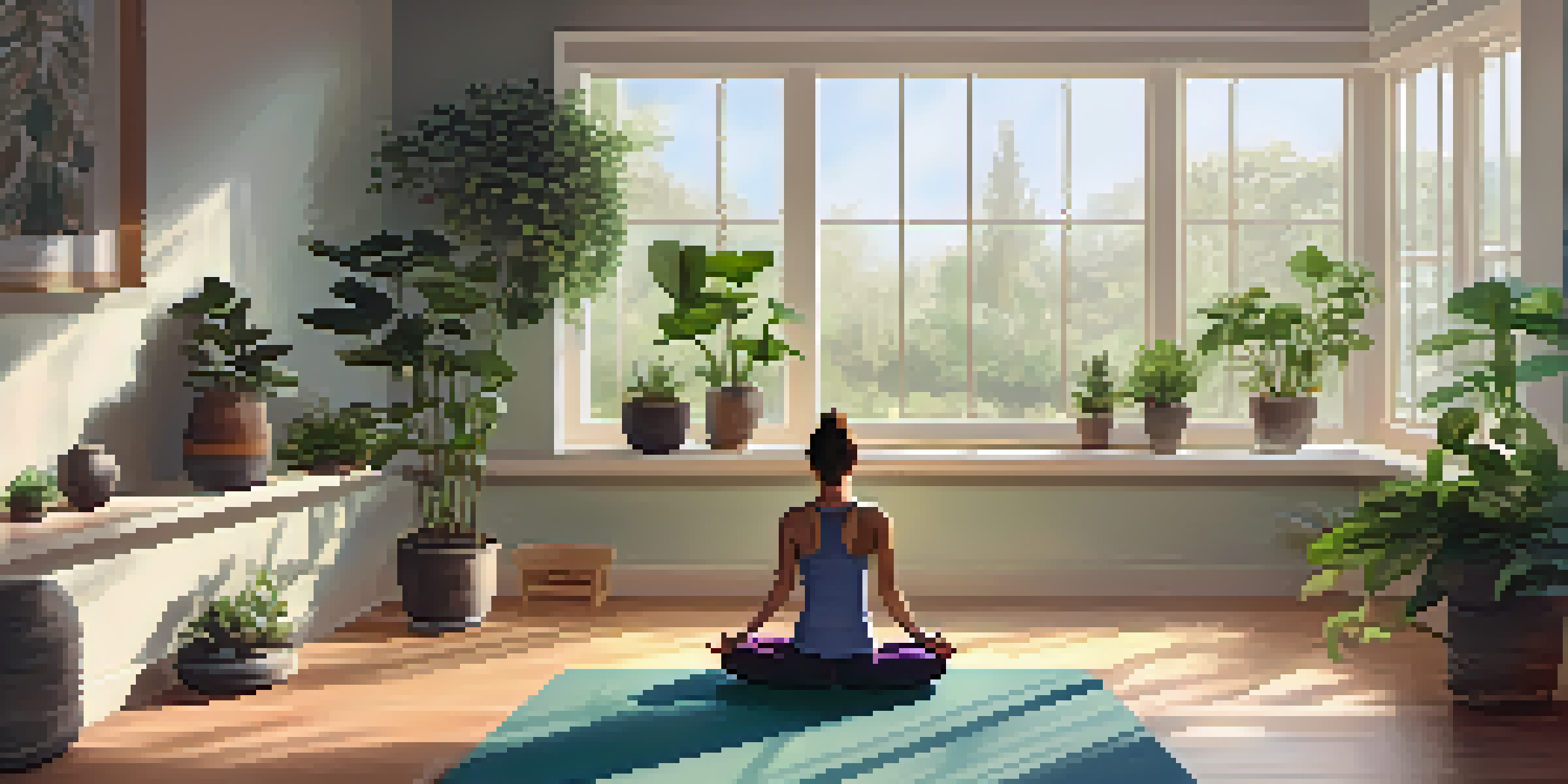Yoga Poses to Promote Self-Care and Inner Peace

The Importance of Self-Care in Our Lives
In today's fast-paced world, self-care is often overlooked. Many of us get so caught up in our daily responsibilities that we forget to take care of our own needs. This neglect can lead to stress, anxiety, and burnout, making it crucial to prioritize self-care.
Self-care is not a luxury. It is a necessity.
Self-care isn't just about pampering yourself; it's about nurturing your mental, emotional, and physical well-being. By engaging in practices that promote self-awareness and peace, such as yoga, we can create a more balanced lifestyle. Remember, caring for yourself isn't selfish—it's necessary.
Incorporating self-care into your routine not only benefits you but also improves your interactions with others. When you feel good inside, you're more equipped to tackle challenges and support those around you. Let's explore how yoga poses can play a pivotal role in enhancing your self-care journey.
How Yoga Supports Mental Well-Being
Yoga is a powerful tool for promoting mental clarity and emotional stability. Through mindful breathing and movement, yoga helps reduce stress levels and cultivates a sense of calm. This practice encourages us to tune into our thoughts and feelings, fostering greater self-awareness.

When you step onto the mat, you're not just exercising; you're engaging in a form of meditation. The combination of physical postures, known as asanas, and breath control allows for a deeper connection with oneself. This connection is vital for processing emotions and achieving inner peace.
Self-Care is Essential for Well-Being
Prioritizing self-care helps reduce stress and enhances overall mental, emotional, and physical health.
Studies have shown that regular yoga practice can alleviate symptoms of anxiety and depression. By integrating yoga into your self-care routine, you're investing in your mental health and creating a sanctuary for your mind—a place where you can retreat whenever life feels overwhelming.
Child's Pose: Finding Comfort and Safety
Child's Pose, or Balasana, is a gentle resting position that invites tranquility. It encourages you to fold inward, symbolizing a return to safety and comfort—a perfect pose to practice when feeling stressed. By resting your forehead on the mat, you can let go of tension and simply breathe.
Yoga is the journey of the self, through the self, to the self.
This pose also offers a moment of reflection, allowing you to check in with your body and mind. As you settle into the stretch, focus on your breath and visualize any worries melting away. The simplicity of this pose makes it accessible for all levels, making it a favorite in many yoga sessions.
Incorporating Child's Pose into your self-care routine can help you cultivate a sense of grounding. Whenever you need a break, whether it’s during a busy workday or after a hectic week, returning to this pose can bring you back to your center and remind you of your inner strength.
Corpse Pose: Embracing Stillness and Relaxation
Corpse Pose, or Savasana, is often seen as the most challenging pose due to its emphasis on complete relaxation. In this pose, you lie on your back, allowing your body to sink into the floor while releasing any lingering tension. It’s a beautiful way to honor your body after a yoga practice.
As you lie still, focus on your breath and let go of any racing thoughts. Savasana is not just a physical resting pose; it's an opportunity to cultivate mindfulness and presence. By embracing this stillness, you can reconnect with your inner self and foster a deeper sense of peace.
Yoga Promotes Mental Clarity
Engaging in yoga practices fosters self-awareness and emotional stability, making it a powerful tool for mental well-being.
Making Savasana a regular part of your self-care routine can enhance your overall well-being. It's a gentle reminder that taking time to pause is essential for rejuvenation. By allowing yourself to simply be, you create space for healing and reflection.
Cat-Cow Pose: Flowing Between Movement and Breath
Cat-Cow Pose is a dynamic sequence that combines two poses to create a gentle flow. This movement encourages flexibility in your spine while synchronizing breath with motion. As you transition between arching and rounding your back, you cultivate a sense of flow and release tension.
This pose is especially beneficial for those who sit for long periods. By opening up the spine and engaging the core, Cat-Cow helps alleviate stiffness and promotes a sense of vitality. The rhythmic nature of this pose can also serve as a moving meditation, helping clear your mind.
Incorporating Cat-Cow into your self-care routine can energize you, making it an excellent choice for a morning practice. It reminds you to be present and embrace the ebb and flow of life, creating a balance between effort and ease.
Seated Forward Bend: Cultivating Calmness
The Seated Forward Bend, or Paschimottanasana, is a grounding pose that encourages introspection. As you sit and reach forward, you may feel a gentle stretch in your hamstrings and lower back. This pose invites you to slow down and connect with your body and breath.
In this forward bend, you can visualize releasing any pent-up stress or worries. The act of folding forward symbolizes surrendering to the present moment, making it an excellent addition to your self-care routine. It's a reminder to let go of control and simply be.
Incorporate Poses for Inner Peace
Specific yoga poses, like Child's Pose and Tree Pose, can be integrated into daily routines to cultivate calmness and balance.
Practicing Seated Forward Bend regularly can help foster a sense of calm and clarity. This pose encourages you to embrace stillness and reflection, creating a space for inner peace to flourish.
Tree Pose: Finding Balance and Strength
Tree Pose, or Vrksasana, is a wonderful way to cultivate balance both physically and mentally. As you stand tall on one foot, you engage your core and focus your mind. This pose encourages you to connect with your inner strength while rooting down through the standing leg.
By practicing Tree Pose, you learn to find stability even amidst life's fluctuations. The act of balancing teaches patience and concentration, qualities essential for fostering inner peace. As you focus on a point in front of you, let distractions fade away.

Incorporating Tree Pose into your self-care routine can empower you to stand firm in the face of challenges. Remember, like a tree, you can sway with the wind but remain grounded in your values and beliefs.
Closing Thoughts on Yoga and Self-Care
Yoga offers a multifaceted approach to self-care that can transform your life. By incorporating specific poses into your routine, you not only enhance your physical well-being but also nurture your mental and emotional health. This holistic practice allows for deeper self-discovery and peace.
As you explore these yoga poses, remember that self-care is a personal journey. Everyone’s path to inner peace looks different, so find what resonates with you. Whether it's the gentle embrace of Child's Pose or the empowering stance of Tree Pose, embrace what feels right for your body.
Ultimately, the goal of integrating yoga into your self-care routine is to cultivate a compassionate relationship with yourself. By prioritizing your well-being, you're better equipped to face the world with grace and resilience, making self-care an essential part of your daily life.